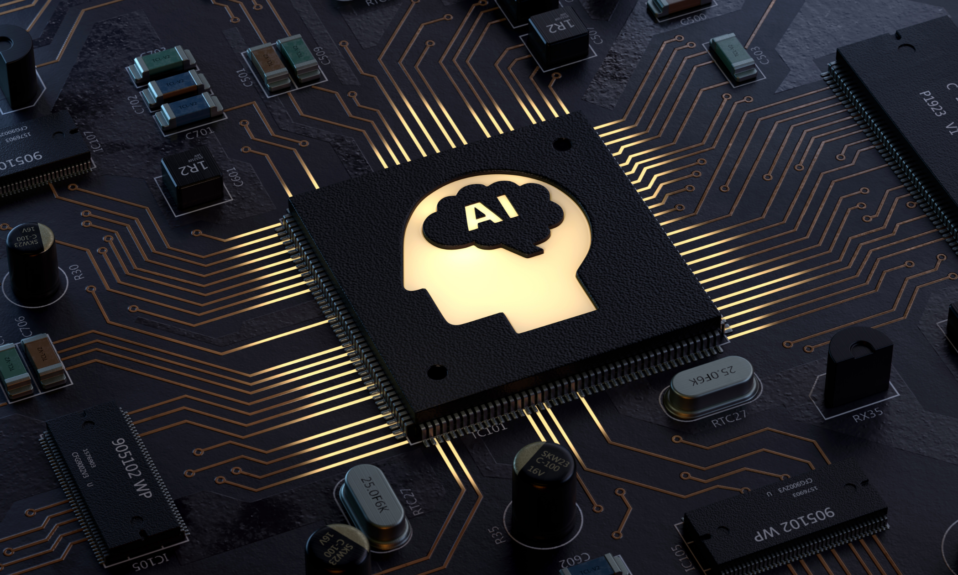
During the last two decades, more than in any other time in history, mankind has devoted a lot of its technological resources to developing and improving artificial intelligence. Taking into consideration all the latest artificial intelligence statistics, we can easily spot a positive trend for this industry.
- Artificial Intelligence Growth Statistics
- TOP AI companies in the world
- Artificial Intelligence in Business Stats
- Artificial Intelligence Industry & Market Overview
- AI and Employment Statistics
- Impact of Covid on AI Adoption and Usage
- The Future Trends of AI stats
83.25 billion by 2027 is the projected global AI chip market revenue.
Year after year, this industry has been seeing unprecedented growth, with more and more companies wanting to get in on the AI train.
“By 2025, artificial intelligence will be vastly smarter than humans and would overtake the human raceâ€ÂÂÂÂÂÂÂÂÂ, according to Elon Musk, TESLA and SpaceX CEO and Founder.
With big names such as Elon Musk, who are big promoters of AI implementation, we can start looking forward to a robot-driven future in just a couple of years.
By 2027, approximately 80% of retail top executives expect to adopt AI automation.
Let’s go over some of the most interesting and fascinating artificial intelligence facts.
Artificial Intelligence Growth Statistics
If you look at any Artificial Intelligence growth chart, you’ll see amazing facts and figures that stand out as a testimony to this industry’s constant expansion and huge potential to shape the world as we know it today.
33.2% is the CAGR (Compound Annual Growth Rate) rate between 2020 and 2027.
All AI stats show just how much this industry is growing year after year.
The Asia-Pacific region will experience the highest CAGR between 2018 and 2025.
Given the fact that this region will also see the highest population growth, it’s only normal to see that the AI industry will have the biggest CAGR in countries such as Japan, India, and China.
TOP AI companies in the world
New AI and machine learning startups are popping up each day, but let’s go over the industry’s most valuable players. These AI giants are trendsetters when it comes to automation and any AI-related processes and tools.
- Amazon Web Services
- Google Cloud Platform
- IBM Cloud
- Microsoft Azure
- Alibaba Cloud
- Anduril Industries
- Sift
- Nauto
- Tempus
- Salesforce
- Automation Anywhere
- SenSat
- Phrasee
- Defined Crowd
- Pymetrics
There are many artificial intelligence leaders worldwide, but these companies are the ones making the biggest impact in today’s modern economy.
Artificial Intelligence in Business Stats
One of the main reasons why AI has seen such spectacular growth is the fact that companies are realizing how much economic and financial sense it makes to start implementing artificial intelligence in their daily activities.
35 AI projects per company is the average estimate for 2022.
That means that during the next year, if you’re working in a big corporation, or a global organization, chances are that you’ll witness some AI projects being implemented and developed.
86% of CEOs have declared that AI is considered a mainstream technology in their office.
This stat applies for 2021. Chances are that the percentage will be even higher next year.
20% of businesses consider that automating tasks is the second most important use of AI.
The tasks most businesses think about automating at first are invoicing and contract validation.
By 2027, approximately 80% of retail top executives expect to adopt AI automation.
When it comes to execs, they are already on board with adopting new technologies. They just lack the necessary tools to apply them faster.
34% of global sales and marketing leaders consider AI to be the biggest and most important factor in improving customer experience.
Since “the customer is always rightâ€ÂÂÂÂÂÂÂÂÂ, it seems that AI will start being used even more in the near future.
85% of customer interactions were answered by AI chatbots in 2020.
These chatbots are powered by AI technology and most of the time, customers walk away satisfied with having their questions asked in record-time.
40% of companies say that the main purpose of using AI is to improve their customer experience.
This proves to be highly efficient, especially for companies working in retail and entertainment.
Approximately 7% of companies are not currently using AI.
However, even these companies are looking for ways to implement this new and fast growing technologies as part of their operations.
64% of businesses consider that the main benefit of AI chatbots is the 24-hour service they provide.
55% say the main feature is instant responses to inquiries, and the same percentage applies for businesses who use chatbots to answer simple questions.
71% of marketers consider that AI is needed for better personalization processes.
It’s becoming more and more of a must to start implementing AI and machine learning into a company’s daily operations.
80% of marketers have integrated chatbots into their customer experience strategies to improve engagement and retention.
These numbers apply for 2020, and chances are that almost all big corporations will implement one form of chat bot or another.
Approximately 50% of 300 billion emails sent on a daily basis worldwide are detected as spam by AI and machine learning.
This just proves to show us how much AI is improving every day.
Artificial Intelligence Industry & Market Overview
While there are still many people against AI, when it comes to AI in business, the numbers simply keep on growing. Artificial Intelligence is gaining more traction with each quarter, and here are the numbers to prove it.
$190.61 billion is the projected AI market value for the year 2025.
Judging by this AI market forecast, in just 4 years the industry will be worth a total of approximately $200 billion!
39% of large global corporations planned to invest in Artificial Intelligence technology.
This number applies for 2020, in the middle of the COVID-19 pandemic.
40% of marketing and sales departments place AI technology and machine learning as a top priority for their organization’s success.
That’s more than any other department.
$1 billion a year is the total worth of Netflix’ recommendations engine.
Using AI to give out the best possible movie, TV shows and cartoons suggestions to its users is one of the company’s most popular features.
279,145 AI patent applications were filed in the United States by March 2019.
And you can imagine that the number of patents has been growing ever since.
45% of households in the US owned a smart speaker as of 2019.
And 26% were planning to purchase one in the very near future.
4.2 billion digital voice assistance are currently in use.
Since last year, these numbers have kept growing due to the AI industry’s huge burst in popularity.
48% of top marketers say that digital and mobile technologies have been a key factor in the way they interact with their customers.
The most commonly used tool is a chatbot based on AI and machine learning.
51% of the world’s largest eCommerce websites have chosen to implement Artificial Intelligence.
Through AI, these companies are able to offer better products to their clients, by analyzing their preferences.
AI and Employment Statistics
It’s becoming more and more of a trend for companies to start focusing on adding AI to their daily operations. This is a direct cause of the rise in AI and AI-related jobs.
The United States has invested $37 billion in the machine learning application industry in 2019.
Since then, the numbers have kept growing and this can easily be seen by looking over the AI employment stats.
93% of automation technologists feel underprepared for upcoming challenges focused on smart machine technologies.
That means that only 7% of the industry’s specialists feel comfortable with future AI challenges.
75% of top directors consider that not adopting AI technology within the next 5 years could drive them out of business.
This will open up the gates for a whole new category of employees, specialized in implementing AI for companies.
38% of people expect AI technology to make their jobs obsolete during the next 3 years.
Another 13% consider that AI, automation and machine learning technology will eliminate a huge number of jobs.
54% of company managers have stated that AI has increased productivity inside their organizations.
Artificial Intelligence is definitely a very efficient way to increase productivity and to cut costs.
79% of executives are sure that Artificial Intelligence is going to make their jobs easier.
Implementing AI to serve your business needs will only work if everybody’s job can be done easier, faster and more efficient.
AI has eliminated 1.8 million jobs and created 2.3 million new jobs in 2020.
That’s a very impressive number for a fast-evolving industry.
AI will create $2.9 trillion of business value plus an additional 6.2 billion hours of worker productivity.
This stat applies for 2021, with AI-adoption and going through the roof.
87% is the accuracy for AI tools which detect plagiarized source codes.
AI comes in handy when you want to protect your intellectual data, and more companies are starting to use it this way as well.
97 million new AI and machine learning jobs will be available for specialists by 2025.
Other jobs with a similar skillset which will be highly-required are process automation specialist, big data specialist and many other AI-developer positions.
43% of manufacturers have created a data scientist/data quality analyst position inside their organization.
An estimated 35% of companies are also planning on following the same step during the next 5 years.
Impact of Covid on AI Adoption and Usage
The COVID-19 pandemic has definitely taken a toll on the global economy, however, AI has managed to stay ahead of the curve and has continued to grow even in the past couple of years.
16% of European countries consider that AI is the future to bringing the COVID-19 pandemic to an end.
European Union countries are planning on implementing AI technology to reduce the spread of the virus and to help the economy stay afloat.
$180 billion by 2025 is the estimated wearable AI market size.
These numbers can be reached in a timespan of just 4 years, which means that the industry keeps proving itself to be a tempting investment for the future.
$83.25 billion by 2027 is the projected global AI chip market revenue.
Basically, any company that’s developing AI technology will stand to gain even from hardware sales, not just AI software revenue.
The top 3 challenges companies face when trying to implement AI technologies are: 56% – staff skills, 42% – fear of the unknown, 26% – finding a starting point.
With more companies finding new ways to overcome these obstacles, AI and AI solutions will quickly start to be implemented at an exponential growth rate.
48% of companies are currently using data analysis and machine learning to improve their data quality.
These processes are done through various AI tools and systems in order to maximize efficiency and to cut costs.
52% of people trust AI technology with personal information.
This means that almost half of all internet users are not afraid of cyber threats when dealing with AI tools.
The Future Trends of AI stats
While there are many skeptics out there and there’s a lot of arguments to be made against the further development of AI, this industry will still continue to evolve and flourish in the years to come.
With a 26.1% market share, China will be the world leader in AI technology by 2030.
China’s economic growth also reflects the use of AI technology and development.
AI will amount to a total of $15.7 trillion total value by 2030.
That’s a 26% rise in global GDP. It’s hard to imagine industries with a similar trajectory to that of the growth of artificial intelligence.
$6.28 trillion (40% of the $15.7 trillion) of the projected GDP for 2030 will come from increased profitability.
The other 60% will come from consumption.
Approximately 40% of the US population used voice search.
These numbers apply for 2019, and it is estimated that almost 50% of Americans use this tool today.
8.4 billion digital assistance are projected to be in usage by 2024.
That’s double the number of AI digital assistance in use today.
By 2030, an estimated number of 20 million manufacturing jobs will be lost to robots and AI.
Professional reconversion programs are already being implemented at a worldwide level in order to keep more people employed in the future.
AI will reduce the total workforce in the United States by 16%.
According to these estimates, by 2030, 16 out of 100 people will have to find new lines of work.
By 2029, it has been predicted that search engines will also understand the meaning of a search, instead of simply compiling the keywords used.
That will lead to AI and machine learning to grow at an even faster pace than today.
It is projected that machines will think of the same capacity as humans by the year 2029.
We’re stepping into Sci-FI movie territory at a very rapid pace.
Conclusion
If you weren’t sold on AI technology by now, you’ll definitely have a better comprehension about this industry after going over all the most relevant artificial intelligent statistics for 2021 and the years to come.
The world is moving at an extremely fast pace, and the only way to keep up with all the latest developments is by analyzing the most accurate artificial intelligence facts and figuring out a way to make them work for your company, or for your very own comfort.
Artificial intelligence is already here, and it’s here to stay. Artificial intelligence is the future and there’s no more turning your back towards it.
What are your favorite AI applications and uses? How do you see it working in your favor in the near future?




